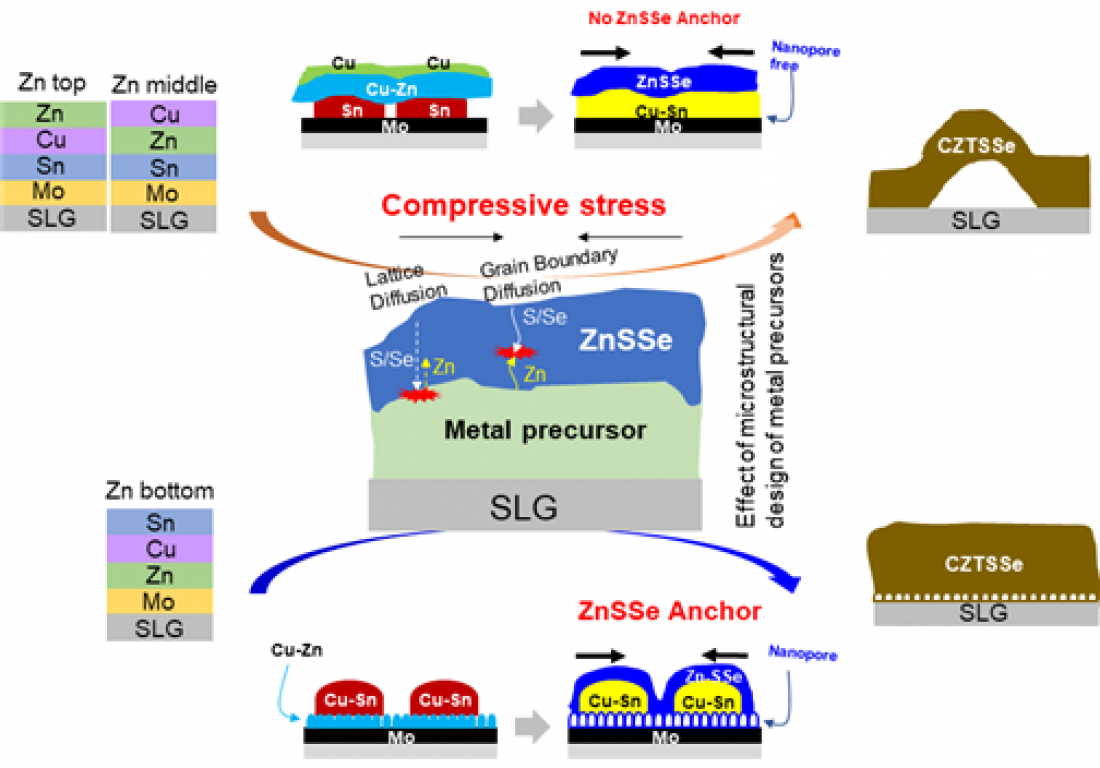□ The DGIST (President Kuk Yang) Thin Film Solar Cell Research Center (Chairman Gang Jin-gyu) worked with Professor Kim Se-yoon of the Department of New Material Engineering at Kyungnam University (President Park Jae-gyu) to investigate the cause of pore formation, a problem in CZTS thin-film solar cells, which are eco-friendly general-purpose thin-film solar cells. It was announced on the 12th (Tuesday) that it developed a technology to overcome this problem.
□ “Solar cells,” which generate electricity by converting light energy from the sun into electrical energy, are sustainable new renewable energy and can be easily found in everyday life. Among them, CZTS thin film is easy to mass-produce because it uses copper, tin, and zinc as its main materials, which are inexpensive and have little toxicity. In addition, due to its bending property, it can be applied to various fields. In 2019, the DGIST Thin Film Solar Cell Research Center developed a solar cell with the world's highest power conversion efficiency of 12.6%. However, it still needs a solution to various defects such as pores of various sizes generated near the lower electrode (pore defects).
□ The DGIST Thin Film Solar Cell Research Center and the research team led by Kim Se-yoon from Kyungnam University investigated the cause of pore formation under the absorption layer, which is a problem with CZTS thin-film solar cells. It has greater significance because it is a technology that can control pore defects using a relatively simple principle. The CZTS absorber layer is produced by coating copper, zinc, and tin in random order and then reacting them with sulfur and selenium at high temperatures. At this time, it was confirmed that large pores were not formed when zinc was coated first. This is a source technology that can suppress pore formation and is expected to further increase the power generation efficiency of CZTS-based thin film solar cells.
□ DGIST Senior Researcher Kim Dae-hwan said, “As major achievements of this study, we presented a new pore inhibition model different from the ordinary model and developed a technology that can inhibit pore formation defects in a simple way.”
□ “In this study, we induced change in the microstructure during the initial reaction by changing the deposition order of the metal thin film and we were able to suppress pore formation by doing so,” said Professor Kim Se-yoon Kim of Kyungnam University. He went on saying, “In addition, we will make efforts to secure process technology that resolves the problem of pores of two different sizes at once.”
□ For this study, Professor Kim Se-yoon of Kyungnam University and Researcher Kim Seung-hyeon of the DGIST Thin Film Solar Cell Research Center participated as the first authors and Kim Dae-hwan and Gang Jin-gyu, senior researchers at the center, as corresponding authors. The research results were published in “ACS Applied Materials and Interface (IF 9.29)”, a renowned academic journal in the field of materials, online on June 16, 2022 and were also selected as the cover paper.
Communication Author Email Address : [email protected]



